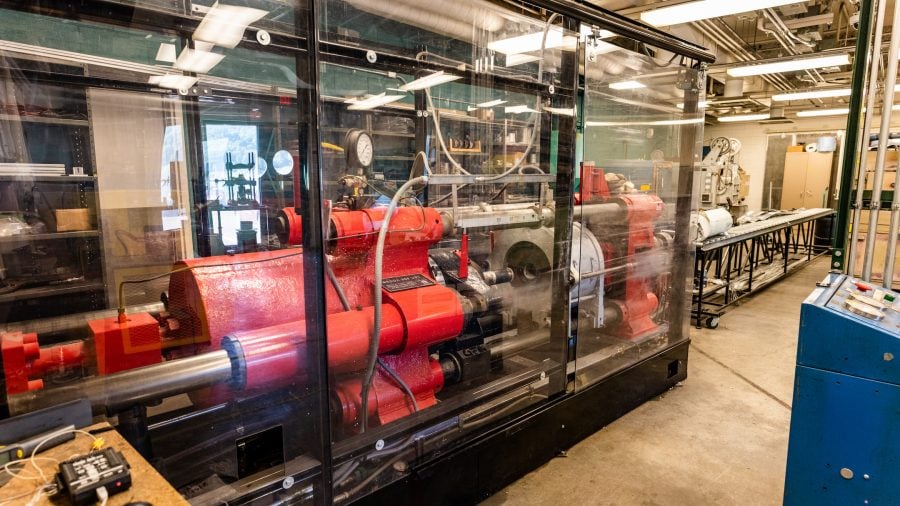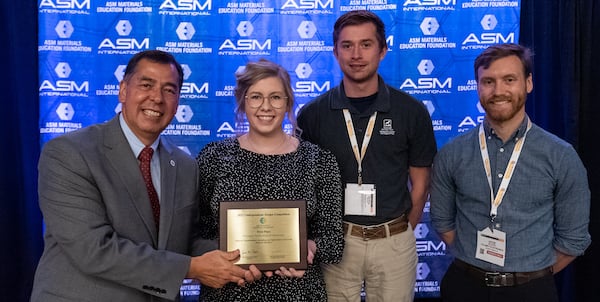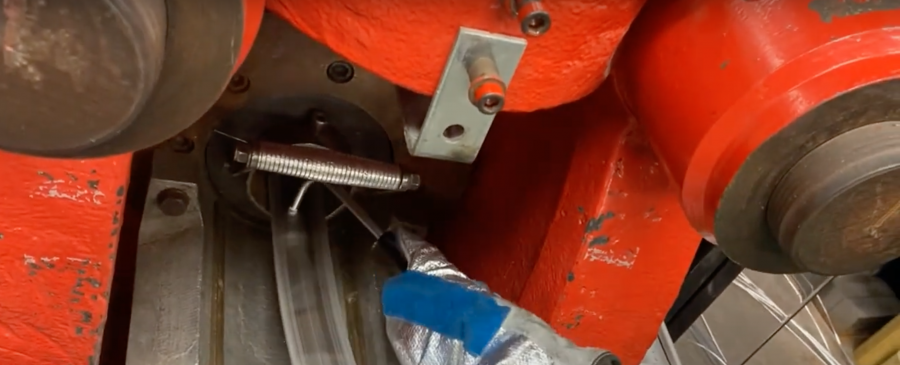
Many engineers remember the excitement of applying their classroom knowledge to their capstone senior design project while also being a bit overwhelmed about how to actually do it.

Back in 2010, this challenge was recognized in Materials Science and Engineering (MSE) by Michigan Tech Professor Mark Plichta, an innovator in project-based engineering education, and Northwestern University Professor Greg Olson, a leader in the relatively new field of computational materials engineering.
The two selected then Assistant Professor Paul Sanders, (who had a Michigan Tech BS and a Northwestern PhD and materials design experience at Ford Motor Company) to implement their vision for MSE capstone senior design. This vision involved using computational materials engineering—a tool that, at the time, was only taught in graduate school. Sanders (somewhat unknowingly) accepted the challenge, and through a sometimes bumpy, continuous improvement process developed the current curriculum in MSE at Michigan Tech.
“Michigan Tech undergrads, with their application mindset, hands-on, problem-solving skills, and openness to mentorship, provided the ideal culture for this endeavor.”
One condition of Olson, who provided the computational engineering software tool Thermo-Calc, was that Michigan Tech compete in the ASM Undergraduate Design Competition, an event that started in 2008 with Northwestern University winning first place. The Michigan Tech strategy was to utilize traditional hypothesis-based inquiry through application of engineering statistics coupled with design of experiments (DOEs) in both the modeling and laboratory environment. Eventually a methods course was developed for spring of the junior year that included a semester-long project to demonstrate the tools, followed by two semesters of the capstone senior design course. Prof. Sanders led this coursework and scoped projects to fit the Michigan Tech methodology. Long-term industry sponsors Eck Industries, ArcelorMittal, and Waupaca Foundry were critical to implementing the vision by providing industry-relevant projects that would allow students to use the toolset taught in the curriculum.
Michigan Tech first entered the ASM Design Competition in 2012 earning second place (Northwestern was first). Michigan Tech’s first five entries earned second place three times and third place twice. Starting in 2018, Michigan Tech started winning…and continued winning…for 5 years in a row. This is a credit not only to the student work on these projects, but also to the methodology and support of industry sponsors. As Janet Callahan, Dean of the College of Engineering at Michigan Tech states, “We’re very proud of our world-class senior design students’ experience. Where else do teams win first place five years in a row, for alloy design, in an era where it isn’t about randomly mixing elements, but rather, about predictive modeling based on known materials parameters? These projects—centered on fundamentally interesting questions, are coupled with faculty and industry expertise. No wonder we’re the go-to place for materials engineers!”

The student team that completed the “five-peat” in 2022 designed a process for modeling the extrusion of aluminum-magnesium (Al-Mg) alloys with cerium (Ce) additions that can maintain their strength at service temperatures up to 400°F. This student team was unique in that there was only one MSE student on the team, Isabella Wakeham Jaszczak, and three mechanical engineering students, Nick Hopp, Jake Klotz, and Jacob Longstreth. Even though the team graduated in spring of 2022, three of the four team members accepted their award at ASM International’s IMAT Conference in New Orleans on September 12, 2022.
“The success of the MSE senior design program is due not only to current students embracing the time-consuming process of project engineering, but also our loyal alumni who provide the projects that continuously improve our process.”
Cerium is the most abundant (and lowest cost) rare earth element, and Ce is known to improve the properties of aluminum. Given that rare earths are often mined together and that the demand is higher for heavier rare earths, there is excess cerium. The project sponsor David Weiss, vice president of research and development at Eck Industries, collaborates on research teams who identify beneficial uses and markets for cerium in order to improve the economics of mining rare earth. Weiss suggested applying Ce to Al extrusion for Eck’s customer, Eaton Corporation.
Extrusion is the process of forming long, two-dimensional cross-sections by forcing hot metal through a die. The students were tasked with modeling the extrusion of Al-Mg-Ce alloys to predict the necessary extrusion force and resultant flow rate. The team used a DOE-based strategy to develop a deformation model for the alloy using elevated-temperature compression testing coupled with MATLAB data analysis. Material model parameters were then entered into the commercial extrusion modeling software Inspire Extrude from Altair to calculate the extrusion force and flow rate. These predictions were tested in Michigan Tech laboratories by permanent mold casting the custom Al-Mg-Ce alloys followed by extrusion on a 550-ton Breda direct extrusion press, donated by Alcoa. To better understand the project, please see the students’ excellent four-minute video .

“My decision to return to Michigan Tech as an MSE faculty member was motivated in large part by the type of students Michigan Tech attracts,” reflects Sanders, now the Patrick Horvath Professor of Materials Science and Engineering. “They are smart, hardworking, and willing to learn.”